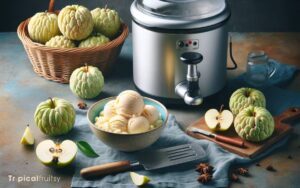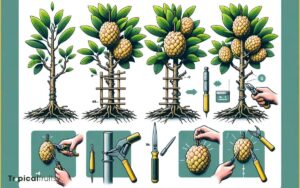How to Make Custard Apple Juice? 4 Easy Steps!
Custard apple juice is an easy-to-make, delightful beverage that begins with picking the ripest custard apples. Look for fruits that are soft to the touch for optimal sweetness.
Carefully wash the fruits, halve them, and scoop out the inviting pulp. A fine mesh strainer is ideal for separating the seeds, and the remaining pulp can be blended with a little water to achieve a smooth, drinkable texture.
The final product is a luscious, tropical juice that can be savored immediately or saved for future enjoyment.
Creating custard apple juice is a straightforward process that involves selecting ripe custard apples, extracting the pulp, and blending it to a smooth consistency. This refreshing beverage offers a unique taste and can be made with minimal ingredients.
Here are some quick steps:
Enjoy your homemade custard apple juice, a creamy tropical delight perfect for quenching your thirst.
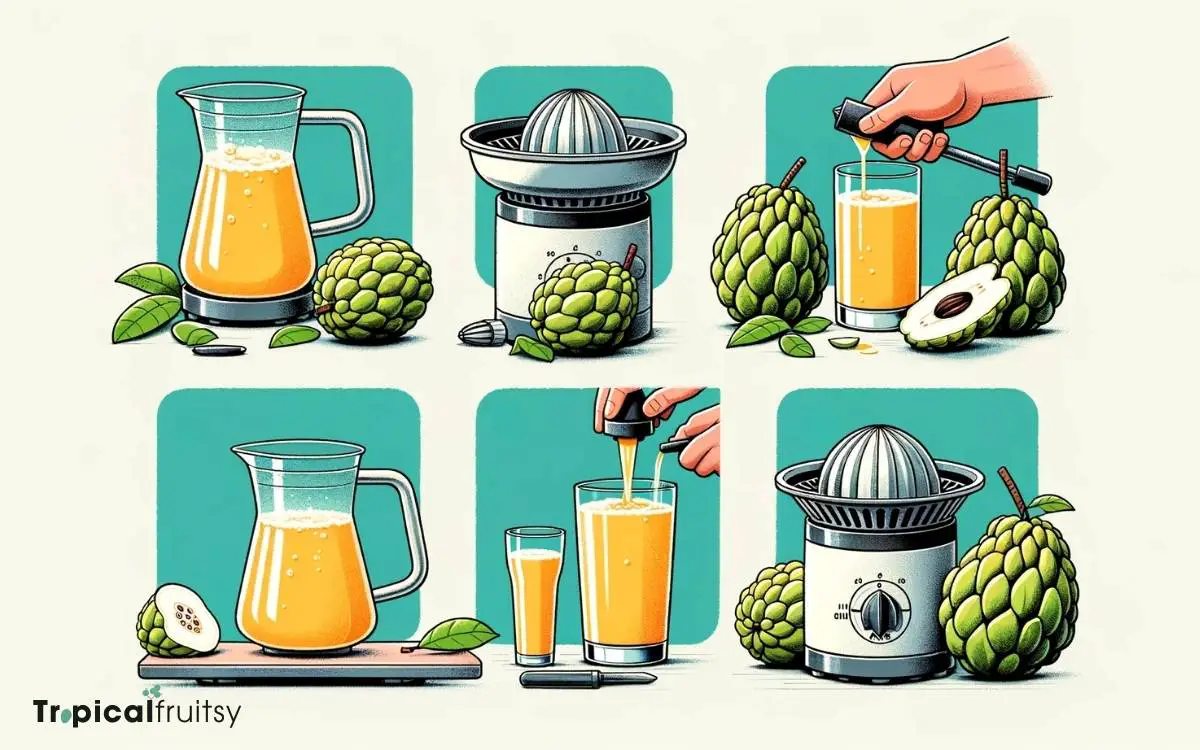
Key Takeaway
Step 1: Selecting the Right Fruit
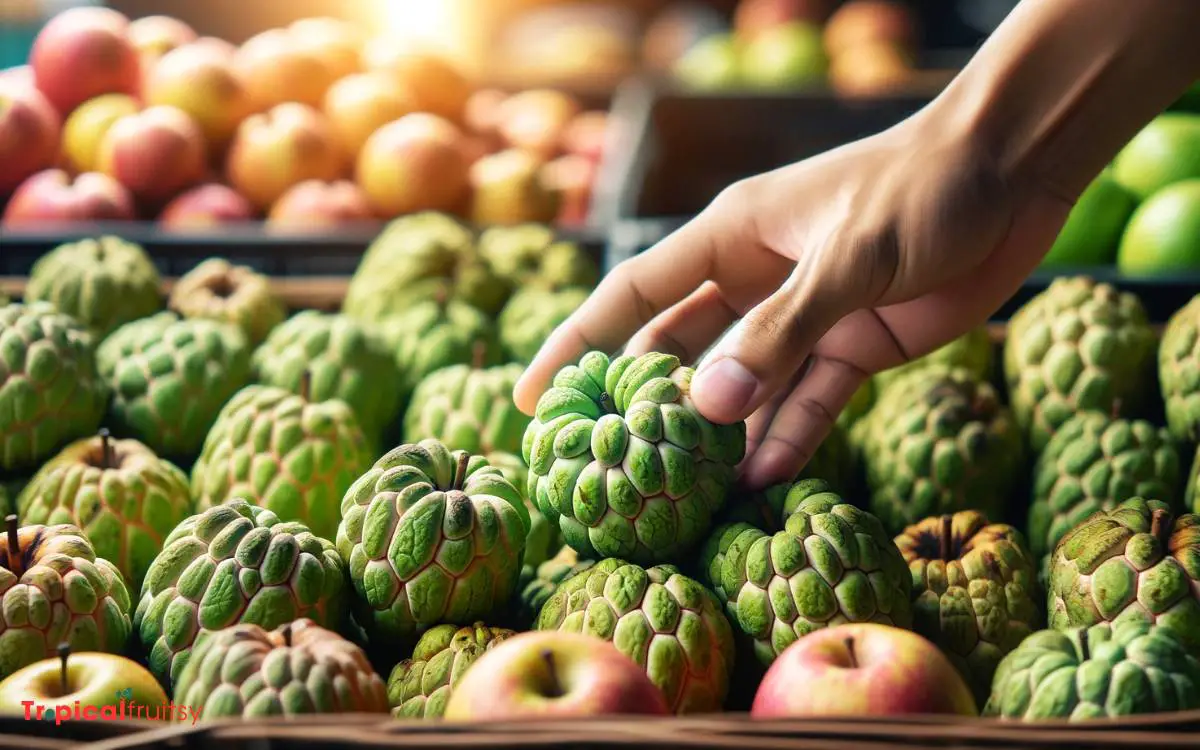
I’ll need to pick three ripe custard apples to ensure the juice is sweet and flavorful. The selection process is critical; I aim for fruits that yield slightly under gentle pressure, indicating peak ripeness.
Overripe specimens, though tempting in their softness, often result in a fermented aftertaste, detracting from the desired freshness.
Underripe fruits are equally unsuitable as they lack the essential sugars that natural ripening processes develop.
I’ll examine the skin for an even, creamy yellow hue, avoiding any with brown spots that suggest decay. I weigh each in my hand, selecting those that feel heavy for their size—a heuristic for juiciness.
Step 2: Prepping the Custard Apples
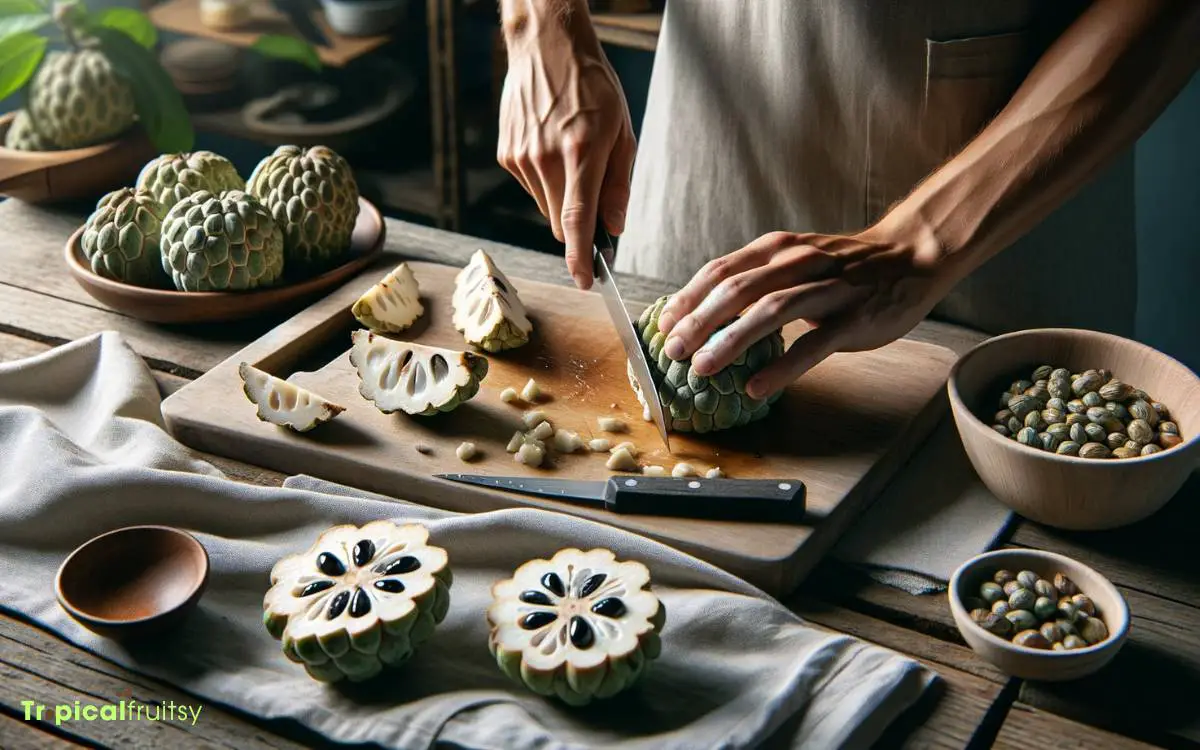
Having selected three custard apples, I’m now ready to prepare them for juicing. Each fruit must be handled with meticulous care to ensure the highest yield of juice.
I start by washing the skin thoroughly to remove any external contaminants that could compromise the juice’s purity.
With a sharp knife, I meticulously slice around the equator of each apple, avoiding crushing the delicate flesh within.
Then, employing a gentle twisting motion, I separate the two halves, revealing the creamy, seeded pulp.
Methodically, I dislodge the seeds, ensuring none remain to taint the final product. This process requires patience and precision, as the seeds are embedded within the pulp.
My preparation is now complete, setting the stage for the next critical phase: extracting the pulp.
Step 3: Extracting the Pulp
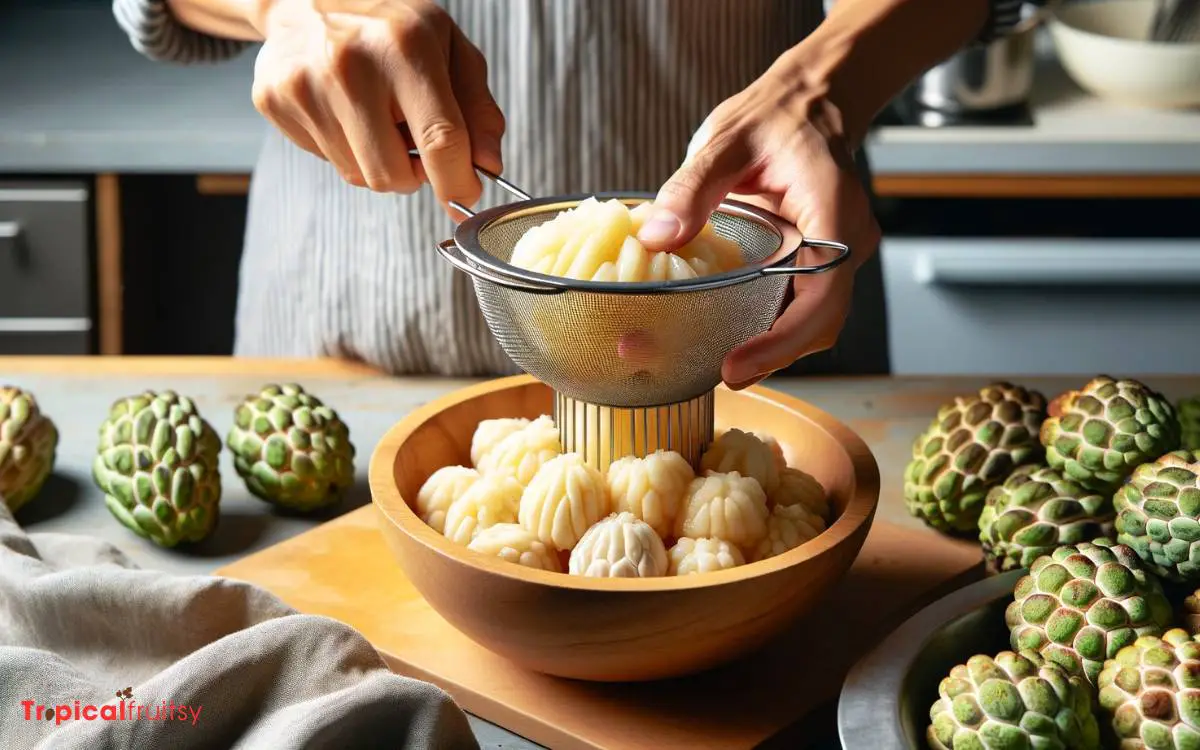
Why waste any of this luscious fruit when I can meticulously scoop out the custard apple pulp, ensuring every bit is ready for juicing?
To begin, I analyze the fruit’s exterior, applying gentle pressure to identify the give that indicates ripeness.
Once I’ve ascertained its readiness, I execute a precise incision around the equator of the custard apple. I’m careful not to pierce too deeply, to avoid nicking the seeds.
With a calculated twist, I separate the halves. Here, I’m greeted by the creamy pulp, harboring seeds within its flesh.
I employ a combination of tools—spoons for scooping and sieves for straining—to systematically separate the pulp from the seeds. This process, while labor-intensive, is essential to yield a smooth, seedless juice.
Can I Use Custard Apples in My Apple Custard Recipe?
Yes, you can incorporate custard apples into your apple custard recipe. Just follow these simple apple custard recipe steps and substitute some of the regular apples with custard apples to give your dessert a unique and delicious twist.
Step 4: Blending Ingredients Together
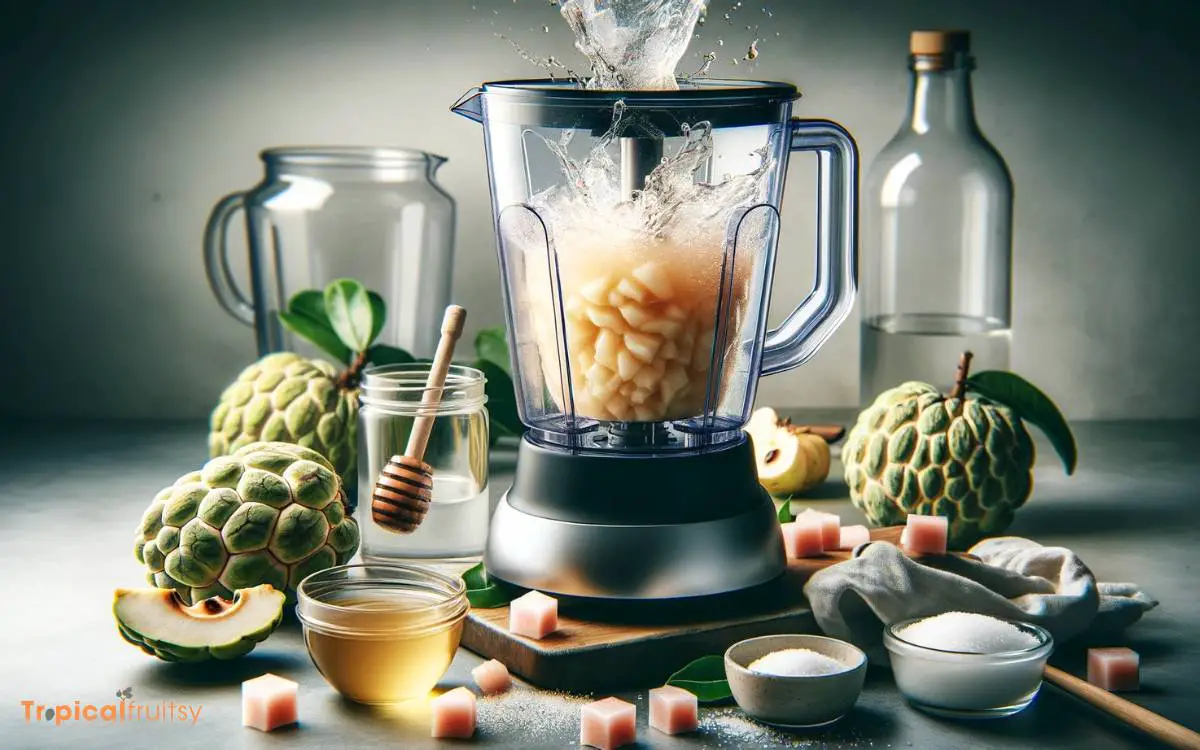
Once the custard apple pulp is free from seeds, I often blend it with a bit of water to achieve the desired consistency for my juice. I’ve found that a high-speed blender works best for a smooth texture.
The ratio of pulp to water is critical; too much water dilutes the flavor, while too little doesn’t allow the blender to work effectively.
I start with a small amount, adding gradually and assessing the viscosity after each addition. I aim for a balance that maintains the custard apple’s rich taste yet flows easily.
The blending process is more art than science, requiring careful observation and adjustment. As I perfect the mixture, I prepare for the next step: providing serving and storage tips to ensure the juice retains its quality.
Serving and Storage Tips
How do I ensure that my freshly blended custard apple juice stays delicious and safe over time?
Here’s my analytical approach:
- Immediate Refrigeration: I transfer the juice to a clean, airtight container and place it in the refrigerator immediately. This inhibits bacterial growth and preserves freshness.
- Temperature Monitoring: I keep my refrigerator’s temperature below 4°C to maintain an optimal environment for the juice’s preservation.
- Shelf-life Awareness: I’m cognizant that homemade juice lacks preservatives, thus I consume it within 48 hours to ensure its nutritional value and taste remain intact.
- Visual Inspection: Before serving, I examine the juice for any signs of fermentation or separation, which indicates spoilage.
Conclusion
After journeying through the meticulous process of crafting custard apple juice, I’ve distilled the essence of these tropical gems into a liquid tapestry that dances on the palate.
Each sip is a testament to the careful selection, preparation, and blending of ingredients. Like an alchemist turning lead into gold, I’ve transformed humble fruit into an exquisite nectar.
With my juice bottled, the flavors are preserved, ensuring that each glass is a fresh draft from the fountain of youth.


